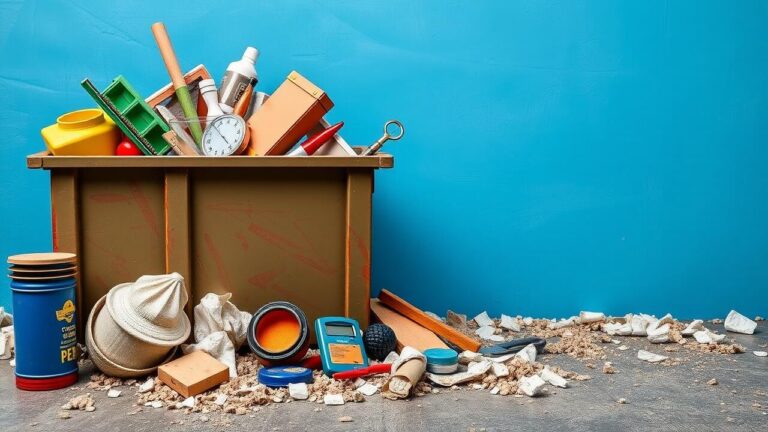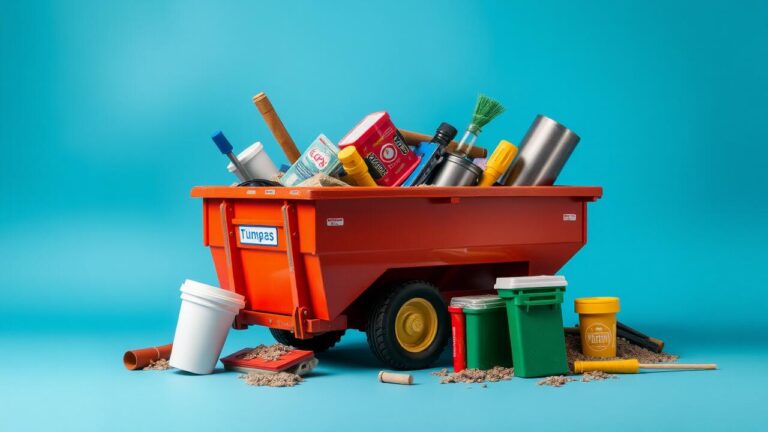Roundup of Residential Dumpster Sizes and Their Uses
40Yard Dumpster
A 40-yard dumpster is the largest option typically available for residential and commercial projects. This massive container can hold approximately 40 cubic yards of material, making it ideal for significant renovations or large-scale construction jobs. Commonly used for tasks like demolitions, building a new home, or large landscaping projects, its capacity allows for a considerable volume of debris, including concrete, wood, and other heavy materials.
Choosing a 40-yard dumpster is particularly beneficial for contractors and businesses that manage substantial waste disposal needs. The size accommodates various types of materials, which helps streamline cleanup processes. Its dimensions also minimize the number of trips needed to dispose of waste, ultimately saving time and labor costs for larger projects.
Suitable for Major Construction Jobs
For large-scale construction projects, using a 40-yard dumpster can greatly streamline the waste disposal process. This massive size accommodates significant debris generated from activities such as demolitions, home renovations, or large commercial builds. With the capacity to hold bulky materials like concrete, steel, and wooden structures, the 40-yard option serves as an efficient solution for maintaining a clean worksite.
Selecting a dumpster of this size allows contractors to reduce the frequency of pickups, saving both time and labor costs. The ample space ensures that multiple types of waste can be disposed of together, further promoting efficiency in managing project timelines. This not only enhances productivity but also supports a more organized approach to handling construction waste.
Factors Influencing Dumpster Size Selection
Choosing the appropriate size for a dumpster involves several critical considerations. The scope of the project plays a significant role, as larger tasks like extensive renovations or construction typically generate more waste than smaller initiatives such as garden cleanouts. It is essential to assess the volume of debris expected, including materials like drywall, concrete, or branches. Therefore, understanding the type of materials to dispose of can help in determining the dumpster size needed.
Another factor to consider is the duration of the project. A longer timeframe can lead to accumulating more waste, making a larger dumpster potentially more beneficial. Timing also influences selection; for example, seasonal yard cleanups may require different sizes based on the amount of accumulated debris. Additionally, local regulations regarding waste disposal might create limitations on the size of dumpster permissible for specific types of projects. Ultimately, careful evaluation of these aspects can aid in making an informed decision on dumpster size.
Assessing Project Scale and Type
Understanding the scope of your project is essential when selecting a dumpster size. Different types of projects carry varying amounts of debris, which directly influences the size you may need. For instance, a minor home cleanup may only require a smaller dumpster, while a significant renovation or construction project might necessitate a much larger option. Evaluating the volume of waste generated helps in determining the appropriate size to avoid overspending or inconvenience during the disposal process.
In addition to the amount of waste, the type of project plays a crucial role in dumpster selection. Construction sites typically produce bulky materials such as wood, drywall, and metal, which require ample space for safe disposal. Conversely, light debris from landscaping or small home projects may fit comfortably in a compact dumpster. Consideration of both scale and type enables homeowners and contractors to rent the right dumpster, ensuring a smooth and efficient clean-up experience.
Residential Cleanup Projects
Homeowners often encounter the need for a thorough cleanup due to various reasons, such as seasonal decluttering, moving, or downsizing. In these situations, renting a dumpster can simplify the process by providing a central location for all unwanted items. Whether it’s old furniture, yard waste, or general clutter, having a dumpster on-site allows for efficient disposal without multiple trips to the local landfill or recycling center.
When considering a rental, the size of the dumpster becomes a key factor. Smaller projects may only require a 10 or 15-yard dumpster, while larger cleanouts may benefit from a 20 or 30-yard option. Understanding the volume of waste anticipated helps in making the right choice, ensuring adequate space for disposal without overwhelming the project with an oversized container. This strategic approach not only makes the cleanup more manageable but also helps in maintaining a neat environment throughout the process.
When to Consider Renting a Dumpster
Homeowners often underestimate the amount of debris generated during a cleanup project. Whether it’s clearing out the garage, renovating a bathroom, or tackling landscaping tasks, the waste can quickly accumulate. A dumpster provides a convenient solution for managing large quantities of materials without multiple trips to the landfill. It offers a centralized location for disposal, streamlining the process and saving time and effort.
Additionally, specific situations warrant the need for a dumpster. Major events like spring cleaning, moving, or estate clear-outs often result in an overwhelming amount of trash. Renting a dumpster allows homeowners to efficiently dispose of unwanted items while maintaining a clean and organized space. This approach not only simplifies the cleanup but also helps avoid potential fines associated with improper waste disposal.
Construction and Renovation Needs
When undertaking construction and renovation projects, it is essential to consider the volume of debris expected to accumulate. Dumpsters come in various sizes, making it crucial to select one that aligns with the specific requirements of the job. For substantial remodels or new builds, larger capacity containers, such as 20-yard or 30-yard dumpsters, often prove beneficial in managing the increased amount of waste efficiently.
Smaller projects like bathroom renovations may only require a 10-yard dumpster. These containers can accommodate a significant volume while not overwhelming smaller spaces. Understanding the scope of the project helps determine which dumpster best suits the task at hand, ensuring that waste disposal remains seamless throughout the construction process.
Selecting the Right Dumpster for Your Project
Choosing the appropriate dumpster size is crucial for ensuring that a project runs smoothly and efficiently. For smaller tasks, such as home cleanouts or minor renovations, a 10 or 15-yard dumpster may suffice. Larger projects like full home renovations or extensive landscaping may require a 20, 30, or even a 40-yard dumpster. Consider both the amount of material generated and the types of debris involved to make an informed decision.
Understanding the nature of your project significantly influences the size of the dumpster you should rent. If demolition is involved, heavier debris like concrete and metal may necessitate a larger option. For general yard waste or household junk, smaller sizes are often adequate. Evaluating your needs upfront will help avoid excess costs and ensure that you have enough capacity to handle all waste materials generated throughout the project.
FAQS
What is a 40-yard dumpster typically used for?
A 40-yard dumpster is primarily suitable for major construction jobs, large-scale renovations, or significant cleanouts, as it can hold a substantial amount of debris and materials.
How do I determine the right dumpster size for my project?
To determine the right dumpster size, assess the scale and type of your project, including the volume of waste you expect to generate and the specific materials you will be disposing of.
When should I consider renting a dumpster for residential cleanup projects?
You should consider renting a dumpster for residential cleanup projects when you have a large amount of debris to dispose of, such as during spring cleaning, after a major decluttering, or following a home renovation.
What factors influence the selection of dumpster size for construction and renovation needs?
Factors influencing dumpster size selection for construction and renovation include the size of the project, the type of materials being disposed of, and the estimated volume of waste expected.
Are there different types of dumpsters available for residential use?
Yes, there are various types of dumpsters available for residential use, including 10-yard, 20-yard, 30-yard, and 40-yard dumpsters, each suited for different project sizes and types of waste.







